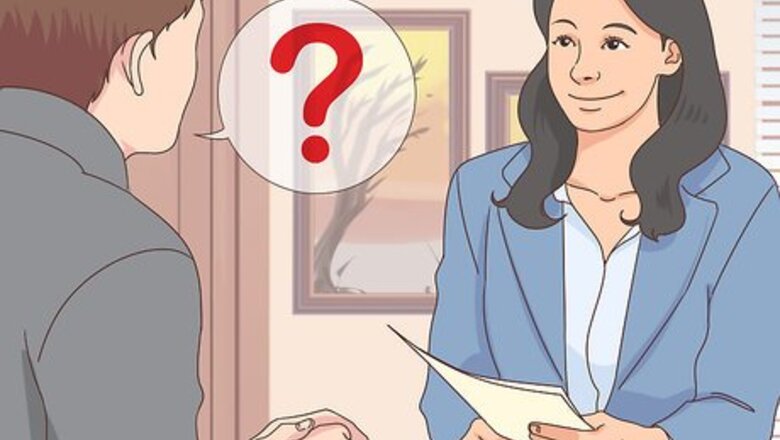
views
Learning Your Company’s Policy

Ask for specific expectations. If you're not sure what your company's policy is, ask the HR rep. Dress more conservatively on the first day if you have no other coworkers to benchmark your attire against. Business casual is often thrown out there to describe how your employer thinks you should dress at work. The problem is that the expectations of individual companies often differ. For example, one company might want you to dress in business attire, minus a suit coat and tie, while another company may encourage you to wear khakis or jeans. When you are told to dress business casual, it is best to ask for details. Ask if your employer has an employee handbook that more clearly delineates the company's business casual policy.

Observe other employees. Look around and see what the other employees are wearing; this is a good gauge of what your employer expects when they say business casual.

Dress formally for interviews. If you're going on an interview and you don't know what your interviewer expects you to wear, the standard is business formal. Remember, it's better to be overdressed than underdressed. Those who are interviewing for a job in business, banking and wealth management, politics, academia, engineering, or health sectors should dress business formal unless otherwise instructed. If no clothing type is specified, and the company you're interviewing for is outside the sectors listed above, stick with business casual. Try to dress 1 level more professional than the dress code for your interview. If the business allows casual clothes in the office, interview wearing business casual clothes.
Business Casual for Women
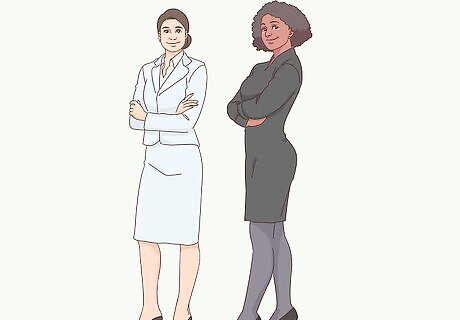
Remember that skirts and dresses are acceptable as long as the hem falls just above the knees. As with men, black and grey are more formal, making for a safer bet. Avoid low-cut dresses or those with high slits. Avoid dresses (especially) and skirts that are more skin-tight. No sundresses.
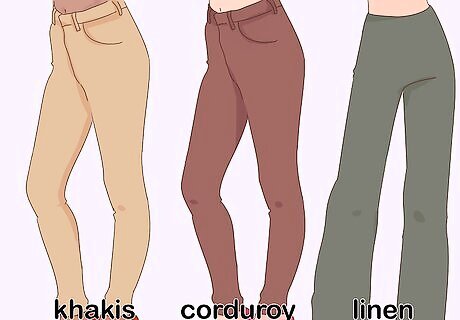
Opt for pants such as khakis, corduroy pants, linen pants or dress pants. If people wear jeans in your workplace, opt for dark denim, since it's a little dressier. Neutral colors are best.
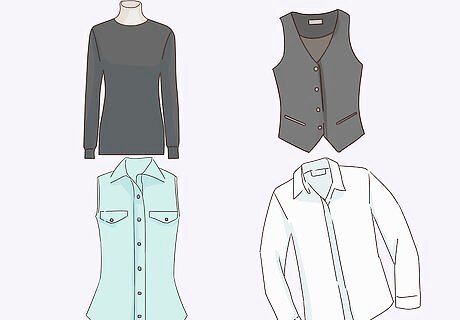
Choose from a variety of shirts. Women have a few more options in this department than the men. Opt for conservative and not too revealing. Blouses, plain shirts, cotton shirts, sweaters, turtlenecks, vests, and sleeveless shirts are all acceptable. Tucked-in or untucked can both go, depending on the shirt. Unusual patterns are acceptable, as long as they are not wild. The standard, however, is a monotone shirt. Use a collar for a more formal look, and collarless shirts for a less formal look.
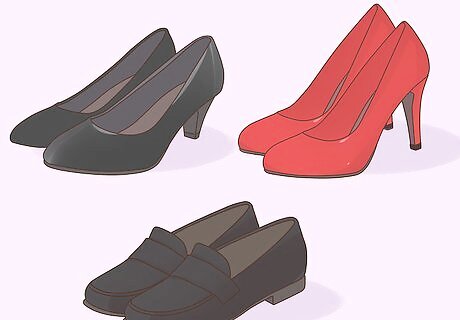
Try footwear such as leather shoes, flat trouser shoes, high heels; no open toed shoes. Avoid flip flops, sandals and sneakers. Heels are okay, so long as they aren't too conspicuous.

Complete the business casual look. Remember dress socks or pantyhose (with skirts or dresses) and tastefully accessorize with light jewelry and a simple purse.
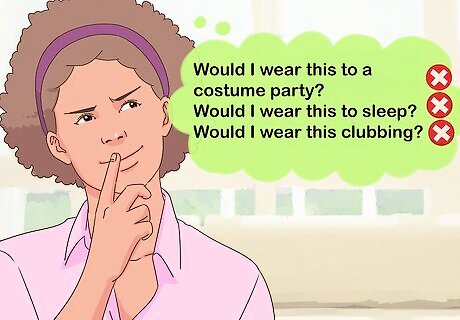
Check the list. Ask yourself the following set of questions if you're still not sure whether your outfit is acceptable. Would I wear this clubbing? The answer should be 'no.' Would I wear this to sleep? The answer should be 'no.' Would I wear this to do yard work? The answer should be 'no.' Would I wear this to a costume party? The answer should be 'no.'
Business Casual for Men

Choose shirts that have collars, such as long-sleeve button down shirts. Always tuck the shirt in and pair the shirt with an appropriate belt. For business casual, tie is optional. White button-down shirts are the most formal and therefore the safest. Unlike pants, all manner of shirt colors are acceptable: Purple, pink, yellow, blue, and red. Choose shirts (and pants) in "formal" fabric: Cotton is king, and comes in many different flavors. Wool is acceptable, if itchy. Silk, rayon, and linen are frowned upon. Choose shirts in "formal patterns: Oxford, plaid, and poplin are a little less formal, but perfectly acceptable. Twill, herringbone, and broadcloth patterns are more formal and nice to use if sprucing up. Hawaiian and other irregular patterns are considered too casual.
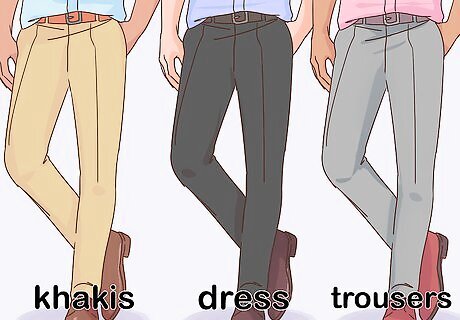
Wear pants styles such as khakis, dress pants, trousers and corduroy pants. Jeans are not considered business casual. Pleated pants and dark colors are more formal, conservative choices. If you want to be on the safe side, overdressing is less frowned upon than underdressing. Pants should extend to the top of your shoe, or slightly longer. Pants that don't reach down to your shoe are considered high-water pants; pants that fold and bunch up near the feet are considered too baggy. Avoid pants in loud colors such as red, yellow, and purple. Camouflage is not allowed, neither are white pants — they feel a little too informal for even business casual. Stick with black, brown, grey, khaki, dark blue and dark green pants.

Consider pairing your shirt with a sweater or sweater vest. V-neck sweaters work best if wearing a collar. Turtlenecks can be worn in combination with a blazer for a sleek look and a little bit of novelty. If you want to wear a suit coat and still look business casual, dress it down with khakis instead of suit pants.
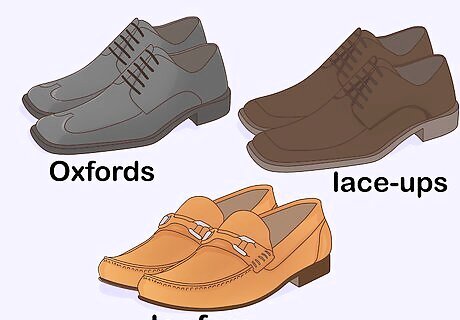
Select formal leather shoes, and don’t forget the dress socks. Stick to black, brown, or grey shoes. Oxfords, lace-ups, and loafers are all standards.
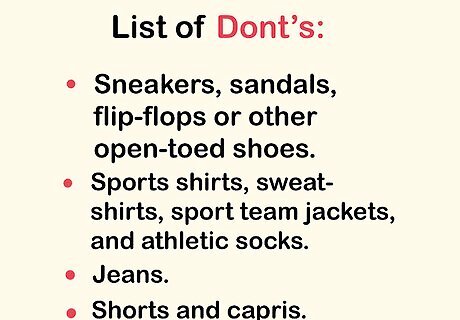
Study the list of don'ts. Avoid the following items, which, fortunately or unfortunately, don't fall under the category of business casual: Sneakers, sandals, flip-flops or other open-toed shoes. Sports shirts, sweatshirts, sport team jackets, and athletic socks. Shorts and capris. Jeans. Very tight, and hence revealing, cuts of pants. No skinny-trousers allowed.




















Comments
0 comment